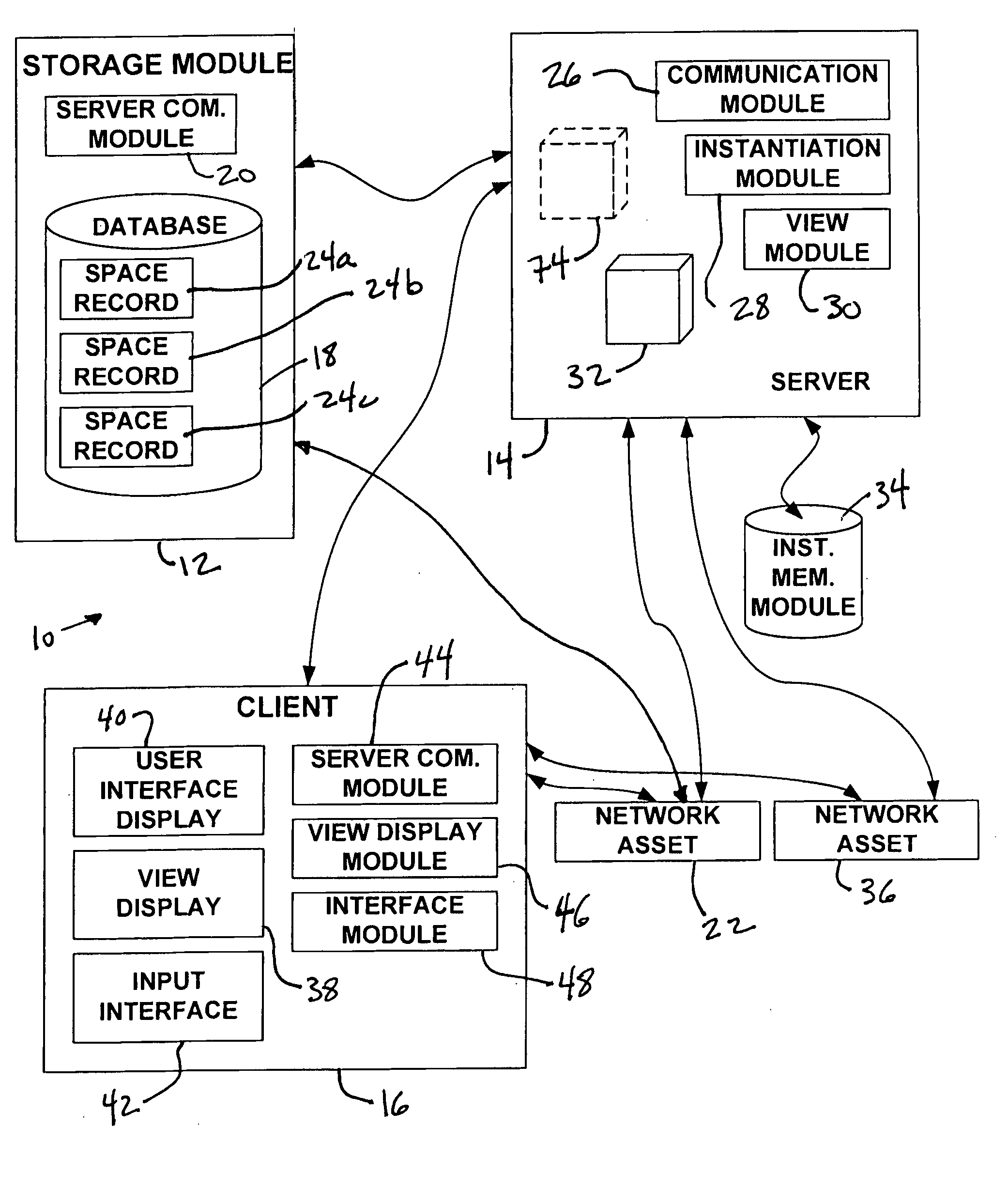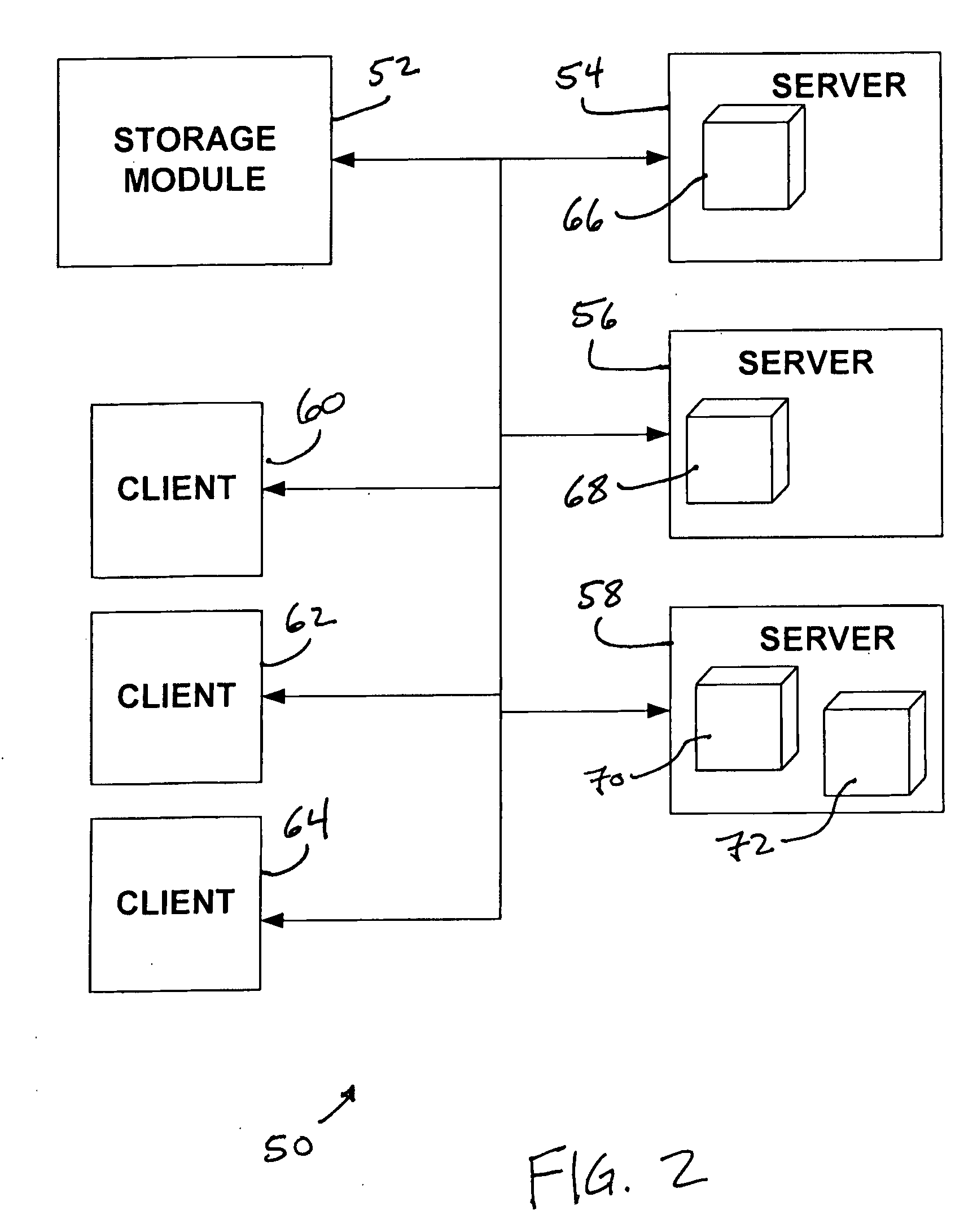System for providing virtual spaces for access by users
a virtual space and user technology, applied in the field of systems configured to provide virtual spaces for users, can solve the problems of limiting the customization of virtual world structures and/or content, limiting the customizability and/or usability of end-users, and limiting the usability of system support spaces, so as to facilitate the creation and/or customization of virtual spaces, enhance efficiency, and enhance the customization
- Summary
- Abstract
- Description
- Claims
- Application Information
AI Technical Summary
Benefits of technology
Problems solved by technology
Method used
Image
Examples
Embodiment Construction
[0016]FIG. 1 illustrates a system 10 configured to provide one or more virtual spaces that may be accessible to users. In some embodiments, system 10 may include a storage module 12, a server 14, a client 16, and / or other components. Storage module 12 and client 16 may be in operative communication with server 14. System 10 is configured such that information related to a given virtual space may be transmitted from storage module 12 to server 14, which may then instantiate the virtual space being run on server 14. Views of the virtual space may be generated by server 14 from the instance of the virtual space. Information related to the views may be transmitted from server 14 to client 16 to enable client 16 to format the views for display to a user. System 10 may implement a markup language for communication between components (e.g., storage module 12, server 14, client 16, etc.). Information may be communicated between components via markup elements of the markup language. By virtu...
PUM
 Login to View More
Login to View More Abstract
Description
Claims
Application Information
 Login to View More
Login to View More - R&D
- Intellectual Property
- Life Sciences
- Materials
- Tech Scout
- Unparalleled Data Quality
- Higher Quality Content
- 60% Fewer Hallucinations
Browse by: Latest US Patents, China's latest patents, Technical Efficacy Thesaurus, Application Domain, Technology Topic, Popular Technical Reports.
© 2025 PatSnap. All rights reserved.Legal|Privacy policy|Modern Slavery Act Transparency Statement|Sitemap|About US| Contact US: help@patsnap.com



